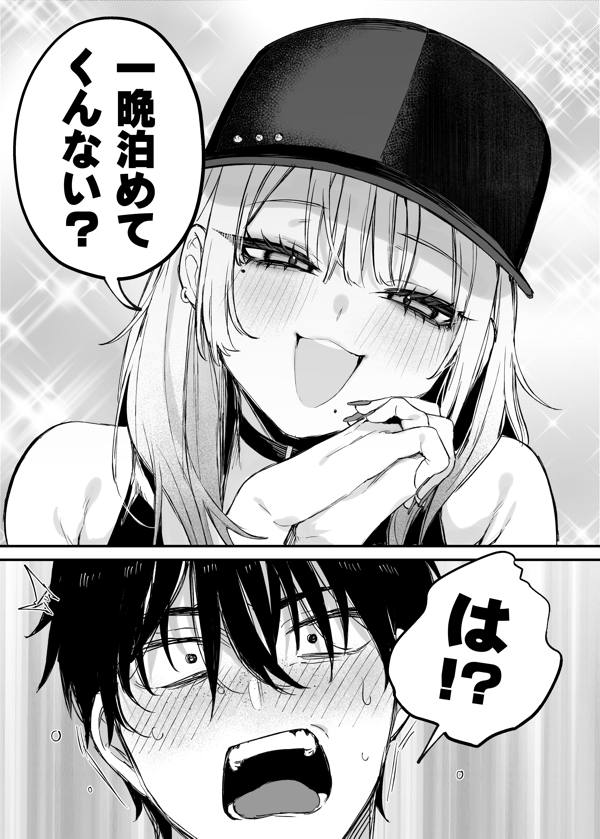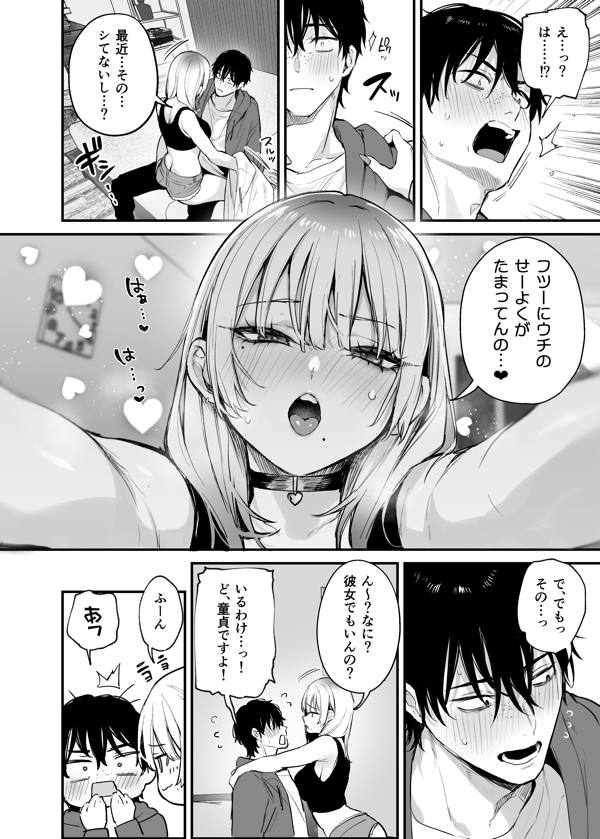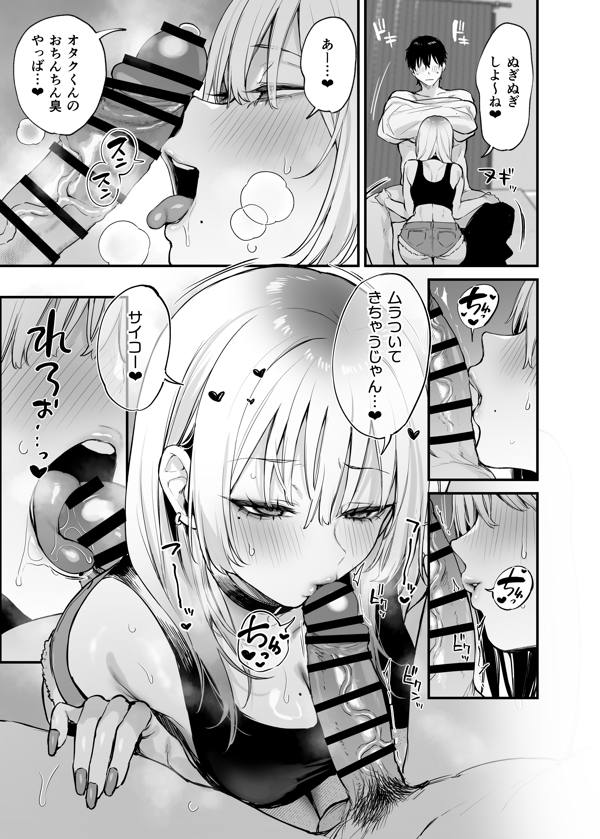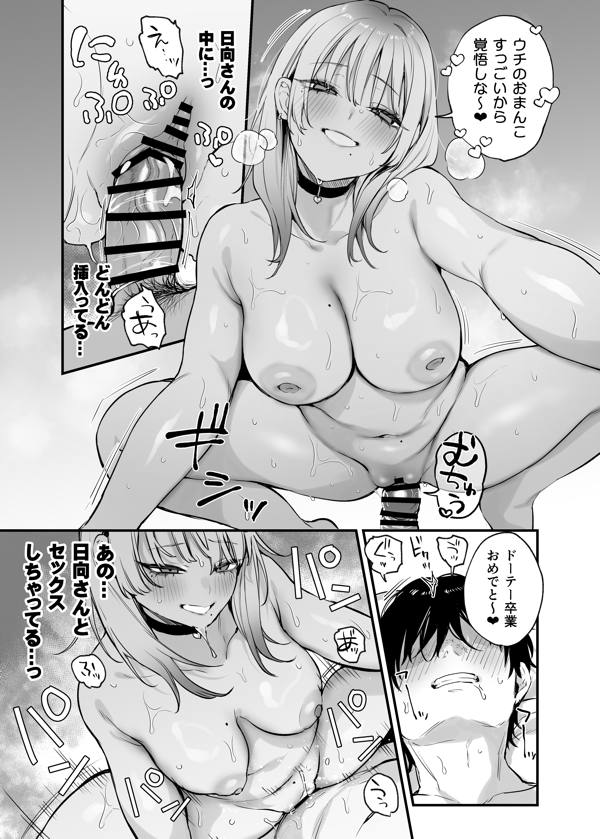※ 広告を×ボタンで閉じて再生ボタンを押した後、リンク先で再生可能です。
※ スマホで動画が重い方は、リンク先の「ダウンロード」から「360p」を選択すると少し軽くなる可能性があります。
FGO(Fate/Great Oppai)GAIDEN SAKURA and SABER, ENJOY AFTER CLOSED HOURS(桜とセイバーの営業時間後のお楽しみ♥)
-
calendar_month
2019-05-2222:31
-
remove_red_eye
8707回視聴
-
favorite
51いいね
add
お気に入り登録
作成者:
face夜凪 超
原作:
local_library
Fateシリーズ
キャラ:
タグ:
作者コメント:
今回は「三助」についてですThis time about "Sansuke"1、日本の銭湯と混浴の文化(Japanese Sentou and culture of mixed bathing)ですが、三助を語るには、その前に銭湯、そして混浴の歴史から探る必要があると思いました現在でも日本人は風呂好きな民族として海外からも認知されていますが、意外にも日本人には元々、「お風呂に入るという風習」はありませんでしたBut, I thought it was necessary to explore from the history of public baths and mixed baths to talk about SansukeEven now, Japanese people are recognized from abroad as bath-loving people, but surprisingly Japanese originally had no custom of taking a bath日本の銭湯(共同浴場)の起源は天然の温泉、つまりは“野湯(「のゆ」もしくは「やとう」と読む)”にあるとされます当時は男女の区分という概念すら無く、「混浴」はむしろ自然な流れだったのです(良い時代でしたね^^江戸時代に入ると、幕府の御膝元江戸では、防災上の観点から江戸城内・大名屋敷以外の家屋に内風呂を禁止しましたこれにより大都市でも共同浴場が大衆化し、銭湯は文化と呼ばれるものまで昇華します江戸時代の銭湯は「混浴」というイメージがありますが、確かに江戸時代初期は混浴でしたが、松平定信のいわゆる「寛政の改革」の一環として1791(寛政3)年、混浴禁止令が出され、江戸市中での銭湯では混浴は無くなりましたしかし、それは表向きの話事実、1841(天保12)年、江戸幕府老中首座水野忠邦による「天保の改革」の一環として再び「混浴禁止令」が出されています元はひとつしかない湯屋(脱衣所・洗い場・浴)を、男湯・女湯に分けるということは湯屋をもうひとつ作らなければならないそれは銭湯経営者にとっては大変な負担を強いるものそこで銭湯経営者たちは時間で男湯・女湯で区分したが、今まで自由に入っていた利用者たちにはすこぶる評判が悪かった銭湯経営者の中には、幕府に隠れて混浴に戻す者も現れる始末このように、混浴禁止はなかなか定着せず、同年、水野忠邦が失脚し、天保の改革が破綻するや、江戸の銭湯はすぐに混浴に戻りました今でも混浴が可能な温泉はありますし、地方に目を向ければ昭和30年代までは、地方の農村・炭鉱・温泉地では混浴は当たり前のように行われていました今ではむしろそれを売りにしている温泉もあるとか・・・The origin of Japanese public baths is said to be in natural hot spring, that is, "Noyu(or Yatou)"At that time, there was no concept of gender division, and "mixed bathing" was rather a natural flow(It was a good era ^ ^From the point of view of disaster prevention, in the Edo period, we banned inner baths in houses other than Edo castle and Daimyo residenceAs a result, public baths became popular in large cities, and public baths developed into cultureThe public bath in the Edo period has the imaged of "mixed bathing", but it was certainly mixed bathing in the early Edo period, but as part of the so-called "reform of kansei" of Shadanobu Matsudaira and the mixed bathing ban was issued in the year of 1791 (Kansei 3).As a result, mixed bathing was no longer possible in public baths in Edo CityBut that\'s a putting on public face^^In a fact,In 1841 (Tempou 12), the "mixed bathing ban" had been issued again as part of the "Reform of the Tempou" by the Edo Shogunate Rojyu Shyuza(Member of Shogun’s seniorcouncil of elders) Tadakuni MizunoOriginally, there is only one bathhouse (dressing room, washing place, bath)To divide it into men\'s and women\'s baths has to make another oneIt was a heavy burden for public bath ownersMoreover, the reputation of the users was extremely bad, and some public bath ownershad appeared to hide at the shogunate and return to mixed bathingIn this way, the ban on mixed bathing was not readily established, and in the same year, when Tadakuni Mizuno fell, the reform of the Tempou failed, and the public bath in Edo city returned to mixed bathing soonEven now there are hot springs where mixed bathing is possible, and if you look at the area, mixed bathing was carried out as usual in rural areas, coal mines and hot spring areas until the 1950s.Nowadays there are also some hot springs that make "Konyoku (mixed bathing)" a selling point...2、三助の登場(Sansuke\'s appearance)江戸時代初期、銭湯で流し(洗体・垢すりなどの接客)は主に湯女(詳しくはhttps://ecchi.iwara.tv/videos/wnq7zhgg5xsq1ljk1を参照下さい)が行っていたが、次第に性的なサービスが主流になっていき、売春専門の湯女を専らに置く銭湯の事を「湯女風呂」と呼ぶようになり、一時期は全盛を極めたが、幕府の度重なる弾圧の末、1703(元禄16)年の大火により自然消滅に至り、湯女という職業もこの世から消えることになった湯女に代わり「流し」の仕事を引き継いだのが男の「三助」たちであった三助がいつ頃誕生したのかは定かではありませんが、享保年間の頃(1716~1736)には現代に伝わる三助の仕事が確立されていたといわれていますIn the early Edo period, the work of Nagashi(body washing, serving guest, etc...) in the public bath was mainly done by Yuna(Please see “https://ecchi.iwara.tv/videos/wnq7zhgg5xsq1ljk1” for details)But,When Yuna\'s work became sexual service gradually, people began to call the thing of the public bath that puts Yuna who specializes in prostitution "Yunaburo"Yunaburo was at its peak for a while, but after the repeated repression of the Edo Shogunate, the Great Fire of 1703 (Genroku 16) led to the extinction, and the profession of Yuna also disappeared from this worldThe men "Sansuke" took over the work of "Nagashi" instead of YunaIt is not clear when Sansuke was born, but it is said that the work of Sansuke transmitted to the present age was established at the time of the Kyoho year (1716 to 1736)3、三助の仕事(What is Sansuke\'s work ?)1)三助は江戸時代の花形職業だった(The most popular career for men in Japan during the Edo period was Sansuke)混浴が続いたとはいえ、江戸時代の男たちにとって女性の身体に堂々と触れる三助の仕事は花形の職業だったことは容易に想像がつきますしかも三助のお給金はかなり高かったとなれば尚更のことでしょうですが、実際には三助の仕事はなかなかにハードだったようですFor men in the Edo period, when mixed bathing continued, it is easy to imagine that the Sansuke\'s work openly touched the body of woman was a popular careerAnd if Sansuke\'s salary was quite high, that would be even moreHowever, it seems that the work of Sansuke was actually a hard work2)三助は一日にして成らず?(Actual condition of work of Sansuke)三助は、「女性の背中を流す(のが仕事)」だけがクローズアップされていますが、三助の仕事はこれだけでは無いのですSansuke had been widely mentioned only about "washing the back of the woman (at the only work!)", but this is not the only work of Sansuke三助の修業は、木拾いから始まります風呂の釜を炊くには燃料が必要で、江戸時代の燃料は主にそこらへんに落ちてある木くずでした木くずの主な供給源は、取り壊された家屋の廃材ですが、江戸市中の総面積は70㎢(69.93㎢(1725(享保10)年)三助はこの広い範囲から木くずを拾い集めなければなりません数10㎏にもなる木くずをリアカーのような手押し車に積んで十数㎞を歩かなければならいのですこれを毎日、少なくとも3年は続けなければならいそうですこれはかなりの重労働ですこの時点で脱落する者はかなりの数になったはずですSansuke\'s training begins with picking up wood wasteThe fuel needed to heat the bath pot, the fuel of the Edo period was mainly wood waste that fell in the townThe main source of wood waste is scraps of demolished houses, but the total area in Edo City is 70㎢(69.93㎢(1725(Kyouhou10)Sansuke had to pick up wood waste from this wide areaIt is necessary to load dozens of ㎏ of wood waste on the handcart and walk more than a dozen ㎞This is a lot of hard workAt this point a considerable number of people was drop out木拾いの修業を3年経た後、次は釜焚きの修業に移りますここでは釜の温度調節は勿論のこと、それをしながらの洗い場の様子見や客の脱いだ履物の管理(出し入れ)をする下足番など多岐にわたりますそのような苦難を乗り越えた者に三助になる資格を与えられるのですですが、三助になれたからといって安心はできないのですこれからが彼らの試練の始まりなのですAfter three years of wood picking training, they were moved on to the pot heat trainingNot only the temperature control of the bathpot, but also look at the state of the washing place while doing it and manage the footwear taken off by guests, etcThose who had gone through hardships are entitled to become SansukeThey became Sansuke, but they can\'t feel relieved yetFrom now on is the beginning of their tribulation3)三助の仕事(Sansuke\'s work)三助の仕事の手順としては、1;客が番台に「流し」の希望の旨を伝える流しを希望する客が現れたら、番台は客に木札を渡し、三助に流しを希望する客がいることを伝えるその伝達方法は、拍子木(ひょうしぎ:よく年末に「火の用心」と言いながらカチカチ鳴らすあの紐で繋いだ打ち木)を使いました番台はそれ(拍子木)を「男の客の場合は一つ」「女の客の場合は二つ」と打つ回数を変えて三助に伝えてましたAs work procedure of Sansuke,1:The guest tells Bandai the hope of "Nagashi"When a guest who wishes Nagashi appears, Bandai gives a wooden card to the customer and tells Sansuke that there is a guest who wants NagashiBandai used “Hyousigi” for its transmission methodBandai reported it to Sansuke by changing the number of times it was hit "one time for male guests" and "two times for female guests"2;三助が客に流しを行う(Sansuke performs Nagashi to the guest)番台から流しを希望する客がいることを知った三助は、湯を汲んだ桶を持って流しを希望する客の元にやってきます客は三助に、「番台から渡された木札」を見せますこれが三助の客だという証明になります三助が客に流しを行います客が複数いる場合、三助は客の順番を間違えること無く待ち時間に気を配り、且つ客が満足する流しを手際よくこなさなければなりませんこうした三助の手際の良さの裏側には、辛い修行時代と長い経験という下積みがあるからですAfter knowing that there is a customer who wants Nagashi from Bandai, Sansuke comes to the customer who wants Nagashi with a wash basin containing hot waterThe guest shows Sansuke "a wooden card passed from Bandai"This proves that it is the guest of SansukeSansuke does the work of Nagashi to the guestWhen there are multiple guests, Sansuke must pay attention to the waiting time without making a mistake in the order of the guests, and must handle Nagashi\'s work that the guests are satisfied wellThe background to which such Sansuke can do a good job is because there is a foundation of a hard training age and a long experience3;三助が客から木札を受け取る(Sansuke receives a wooden card from the guest)流しを終えた三助が客から木札を受け取りますこれにより、三助は流しを終えた証となります三助はこの札の数によって給料(固定給)の他に手当(歩合制)が付くという給与形態をとっていましたSansuke who finished Nagashi\'s work receives a card from guestsThis had been proof that Sansuke has finished his work at NagashiSansuke had taken the form of salary that pay (payment system) other than salary (fixed salary) by number of this card一軒の銭湯にはたいてい複数の三助を抱えていましたそのため、銭湯の馴染の客のなかには、三助を“指名”する客もいて、そういった客の多少も三助の収入を左右するため、バカにできない存在でしたThere was usually several Sansuke in one SentouTherefore, some of the familiar customers of public baths were those who "designating" Sansuke, and because some of these customers also affected Sansuke\'s income, they could not be neglected4、三助の起源(Sansuke\'s roots)三助の語源にはいくつかの説が存在する一つは、銭湯の被用者(銭湯の主に雇われた者の意)、つまりは従業員の役割の一つであり、「釜焚き」「湯加減の調整」「番台業務」の“「三」つを「助」けた”ということが語源になっているという説二つ目は、全国公衆浴場業環境衛生同業組合連合会という組織が1972年に発行した『公衆浴場史』のなかで、「江戸時代の銭湯の働き者として人気があった越後国(現在の新潟県上越市)出身の3兄弟(仁之助・三助・六之助)」を由来とする説三つ目は平安時代の頃、聖武天皇の后だった光明皇后(藤原不比等の娘。光明子。初めて皇族以外の女性が立后した第一号の女性として知られる)が、天然痘(ハンセン病ともいわれている)が猛威を振るい、民草が苦しんでいた時、浴室(現代でいうスチームサウナに近いものだったらしい)を作り、皇后自らも浴室内で患者である民草の背中を流すなど患者の治療に尽力したというこの時、皇后を助けたのが三人の典侍(すけ)であり、彼等は「三典(さんすけ)」と呼ばれ、彼らが三助の由来とする説もある尚、この時、「酷く重度の癩病患者が現れ、彼を見た光明皇后も最初は躊躇したが、患者の膿を吸ったところ、患者が阿弥陀如来となり、光明皇后の優しさに胸を打たれた」という伝説が残っているこのように、諸説は様々ありますが、個人的には彼女こそ「三助の起源」だと、私は思っていますSeveral theories exist in Sansuke\'s rootsOne is the public bath employee (meaning the person who was hired mainly by the public bath), that is, one of the roles of the employee, it is the theory that "helping the three" of "Pot heating", "Adjustment of hot water", and "Bundai business" is the source of the wordSecond, in the “public bath history” published by the National Public Bath Industry and Environment Association of Health and Social Unions Association in 1972, “The three brothers(Jinnosuke / Sansuke / Rokunosuke) from Echigo(Current Joetsu City, Niigata), who were popular as Edo period public bath workers. Theory derived fromThe third is Empress Komyo, who was Empress of Emperor Shoumu during Heian period(Fujiwara no Fuhito’s dautgher,Komyoshi, Known as the first woman to get married with Emperor as other than Japanese royal family\'s woman),when smallpox (also known as leprosy) rages and the people are suffering, they make a bathroom (it seems to be close to a steam sauna in the modern day) and Empress herself was also committed to treating the patient, such as washing the patient\'s back in the bathroomAt this time, the three Sukes helped the Empress, and they are called "Sansuke", and there are also theories that they are regarded as Sansuke\'s rootsAt this time, "A severe and severe mania patient appeared, and even though Empress Komyo who saw him also hesitated at first, when he sucked the patient\'s pus, the patient became Amitabha Tathagata and was impressed by the kindness of Empress Komyo"There is a tradition thatLike this, there are various theories, but I personally think that she is "Sansuke\'s roots"終わりに確かに三助は女性にモテて(その様子を描いた春画も残っています)、給料も高かったことから、江戸の男たちの憧れの職業だったことには違いはありませんでしたが、修業も辛く、大変な仕事であったことは間違いなかったようですAt the lastIt is true that Sansuke was popular with women (there are still Shunga(erotic art) the situation), and the salary was high, so there was no difference in that it was a career of Edo men\'s yearnings, but It seems that there was no doubt that it was a tough jobBGMいい湯だな(ビバノン・ロック;Viva non rock)Performed by The Drifters(ザ・ドリフターズ)

 俺の3Dエロ動画
俺の3Dエロ動画


